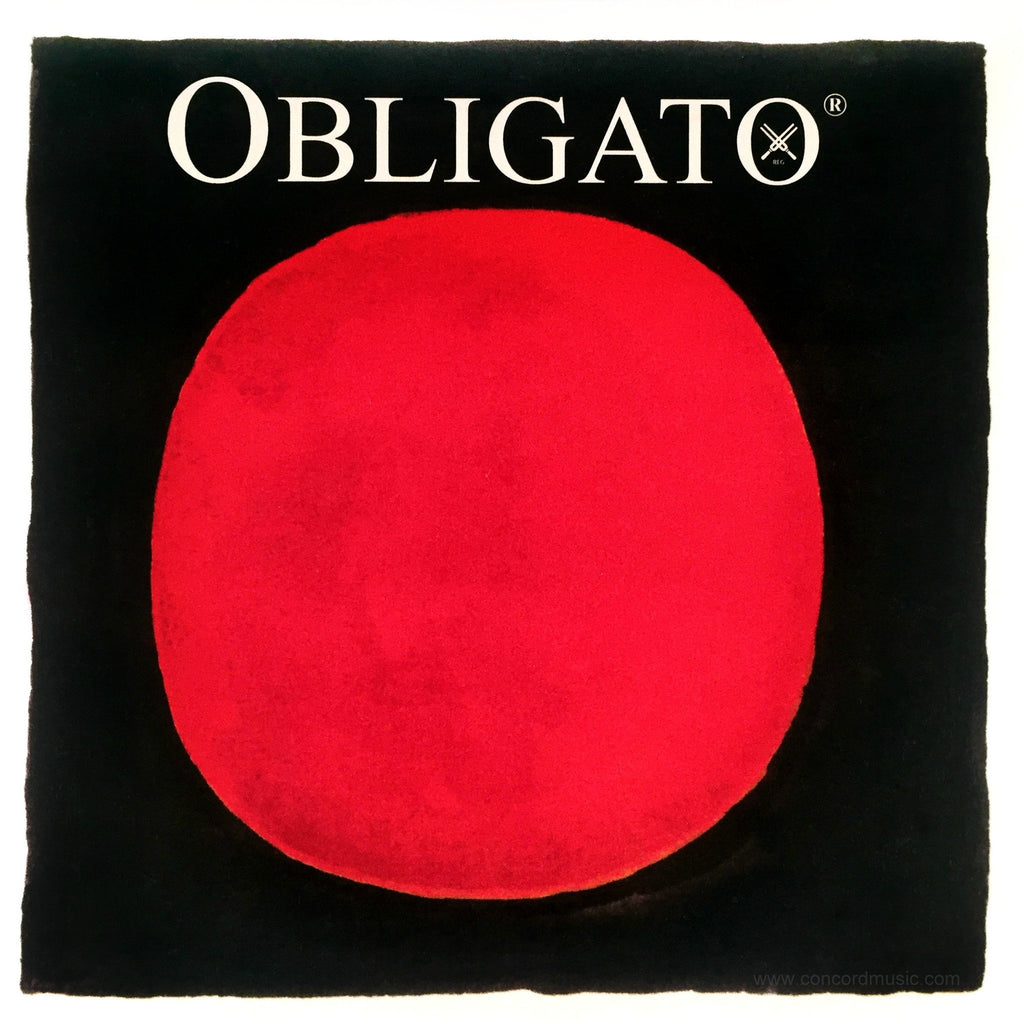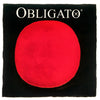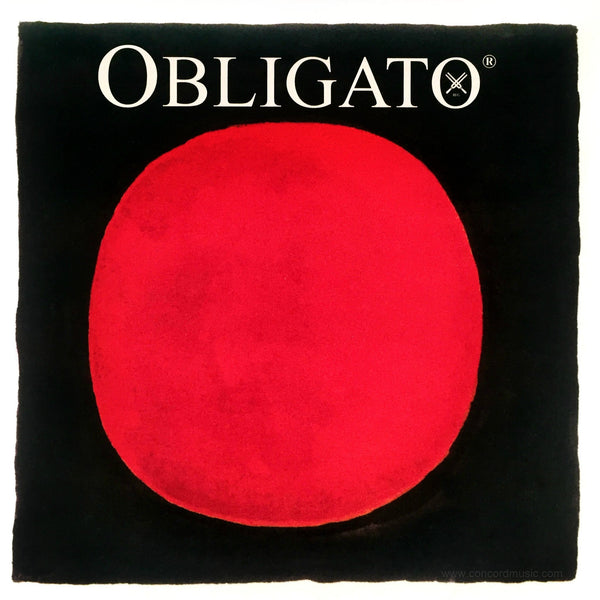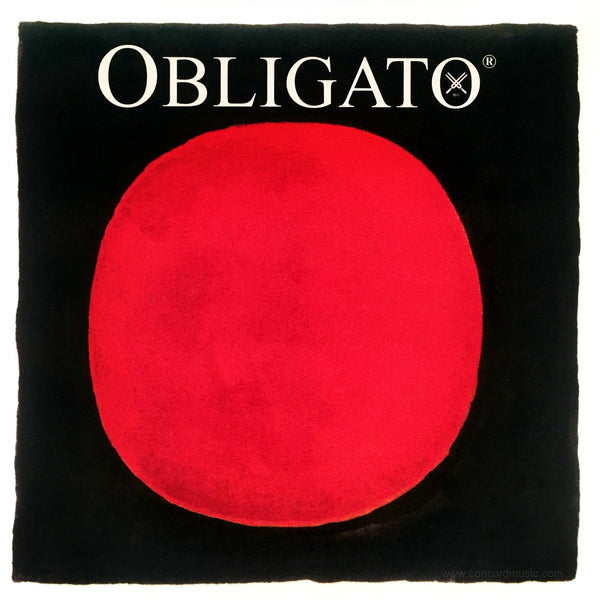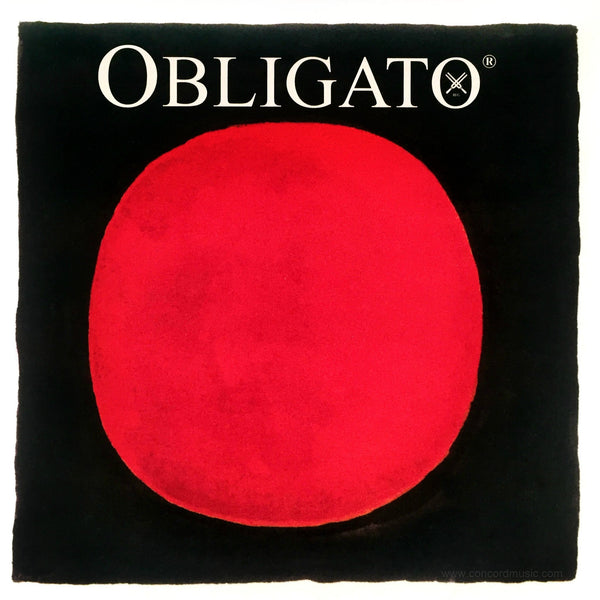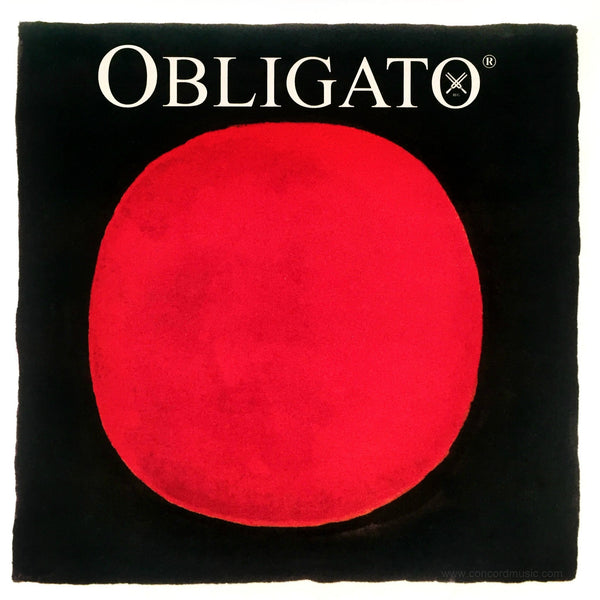This chromesteel wound on synthetic A string has a smaller diameter than the standard Obligato A. I prefer my higher-pitched strings to have a smaller diameter than the lower ones. This is a function of the density of the winding material. Aluminum alloys are less dense than silver alloys and chromesteel. Aluminum strings are frequently larger than the next lower string, for example, aluminum-wound D strings are usually as large or larger than silver-wound G strings and the standard aluminum Obligato A is as large or larger than the D string.
Smaller strings at the same pitch and tension also generally speak faster. I suspect that this might be due to differences in interaction with the bow hair.
On my violin, this string produces a mellow yet powerful and penetrating sound and makes for a smoother transition between the G and D strings and the E string. (This is the reason many Eastern European violinists use a steel-core A string instead of gut or synthetic.) This A string also speaks faster and more clearly when playing in third to fifth position, whereas the standard string was a bit fuzzy in its feel while playing and its sound.
The chromesteel windings are definitely more resistant to corrosion than aluminum alloys and if you corrode strings this is one to try. This corrosion issue is the reason I have sought out silver D strings in the past. As far as I know, this is the only synthetic core A string that is NOT wound with an aluminum alloy.
Try it you'll probably like it, and maybe your violin will like it, too.


